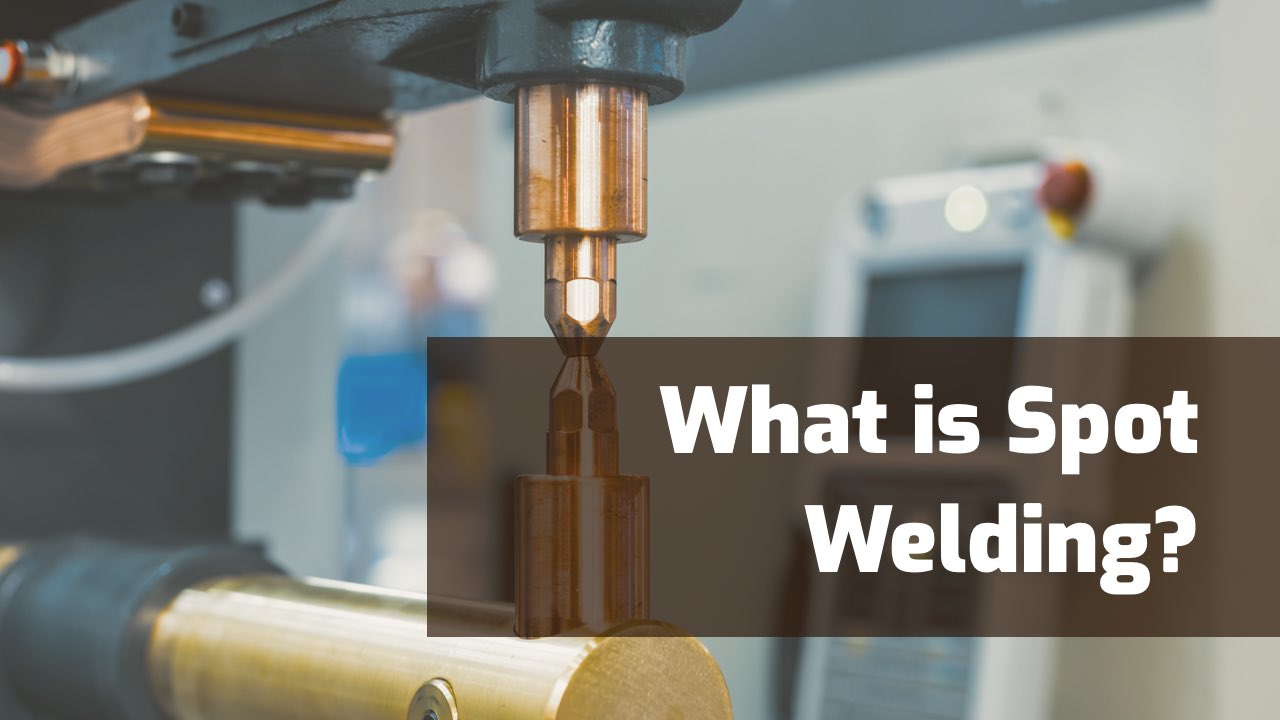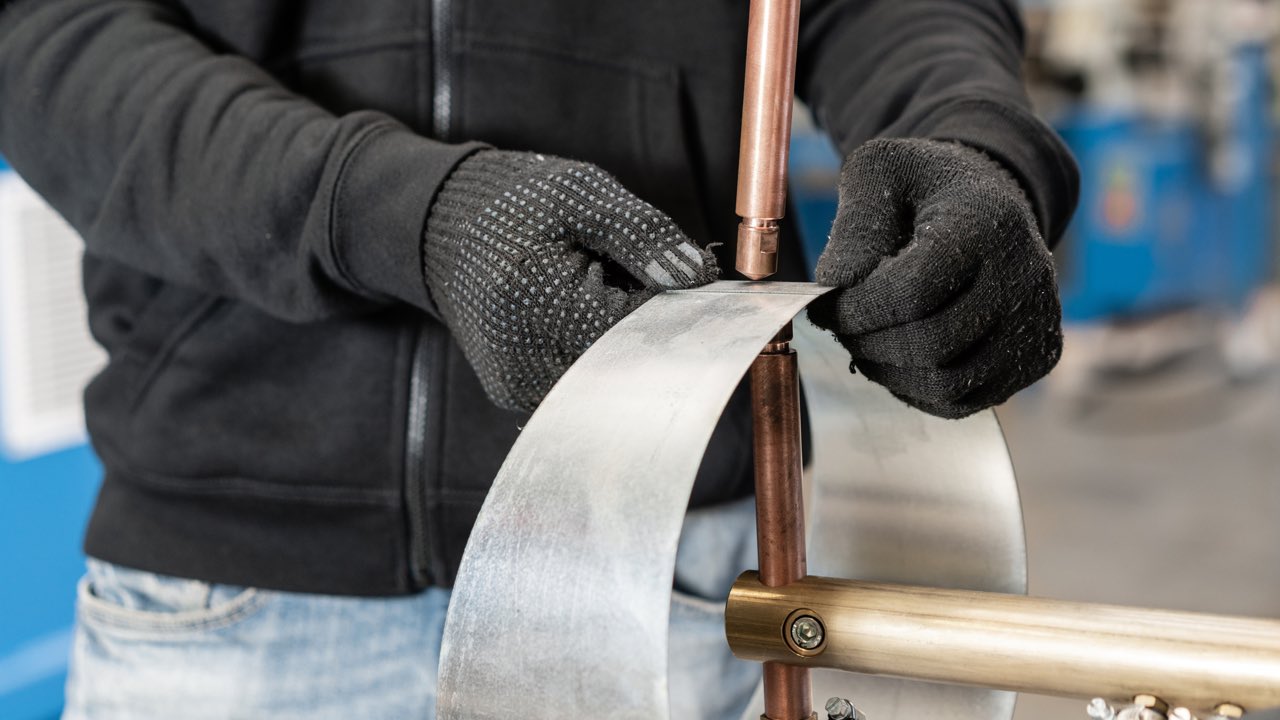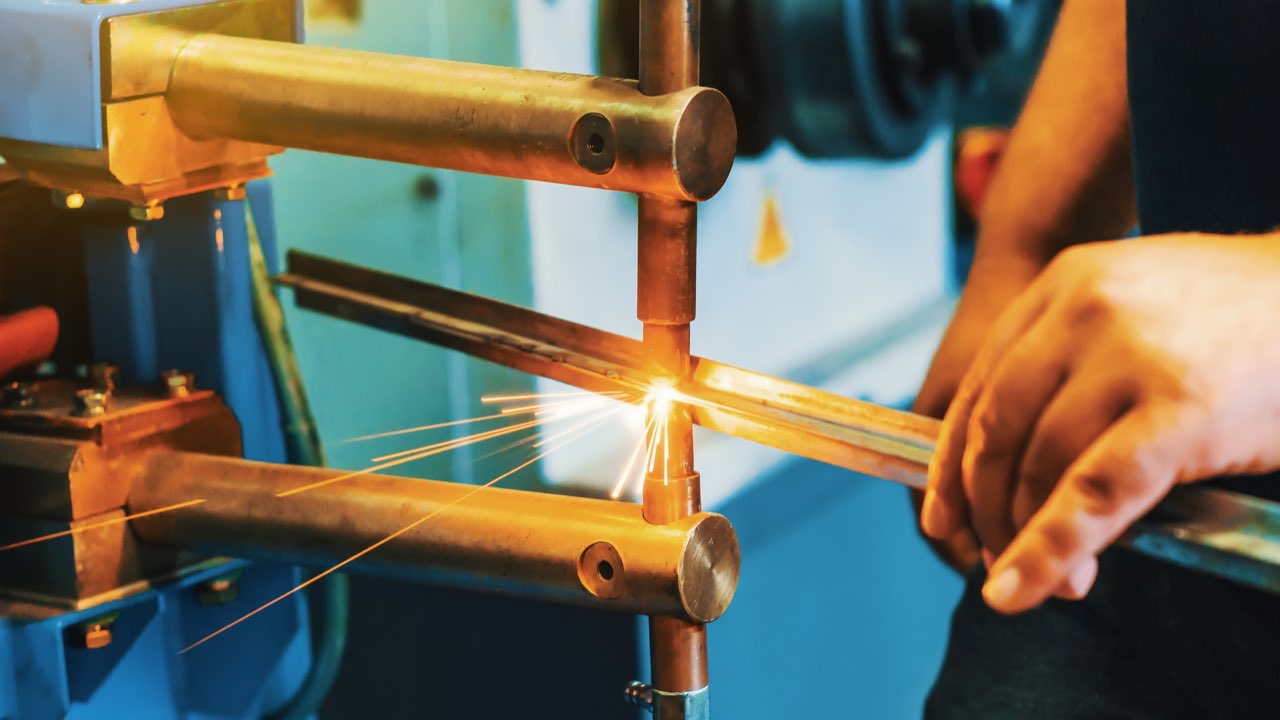Spot welding is commonly used to weld sheet metal. It’s a straightforward process, but there are many ways that things can go wrong if you don’t have spot welding experience.
This article will teach you the basics of the spot welding process and how it works, typical applications, suitable materials, and common problems you may encounter.
What is Spot Welding?
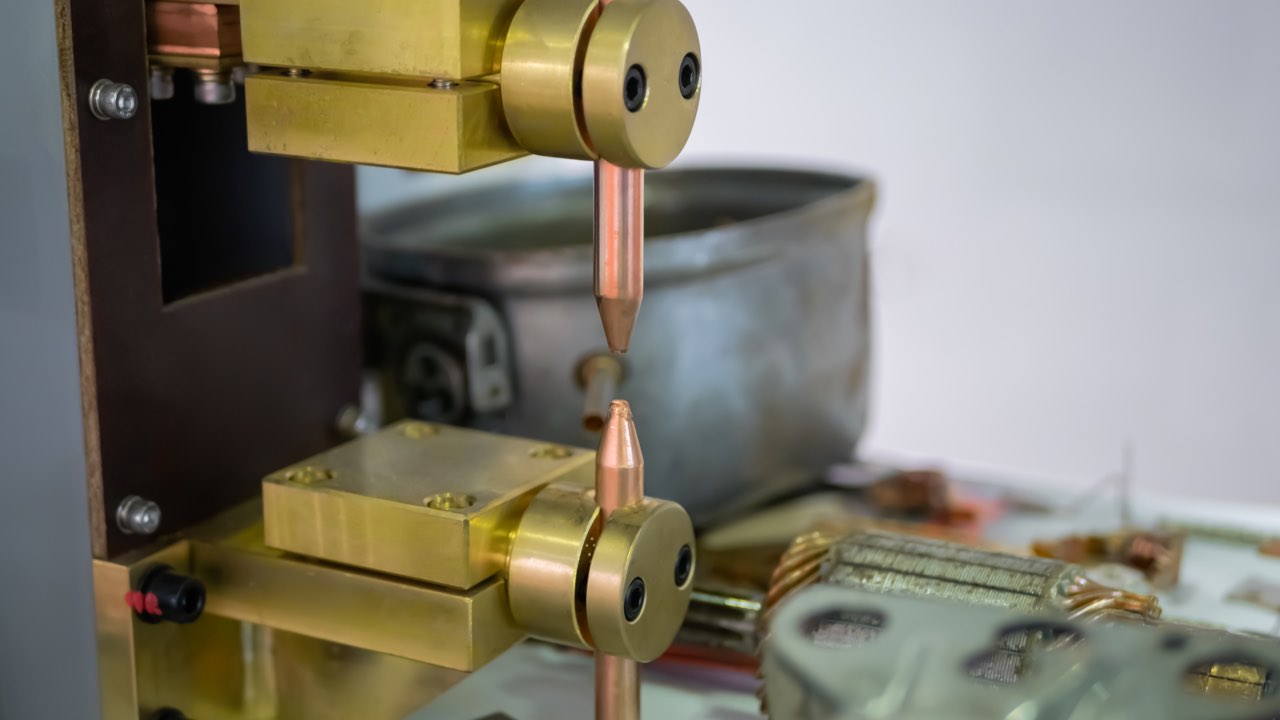
Spot welding is a resistance welding process used primarily to weld two or more metal sheets together. It is achieved by applying pressure and electric current to the spot-weld area. The required heat is generated by the metal’s internal resistance to the electric current.
The electric current and pressure are applied by copper alloy electrodes whose tips are placed on the opposite sides of the metal pieces. The generated heat melts the metal while the pressure from the electrodes squeezes the molten metal to form a weld.
It’s called spot welding because this welding method creates a tiny dot weld, that looks like a spot. The weld created between the copper electrodes is also sometimes called a nugget.
What is Spot Welding Used For?
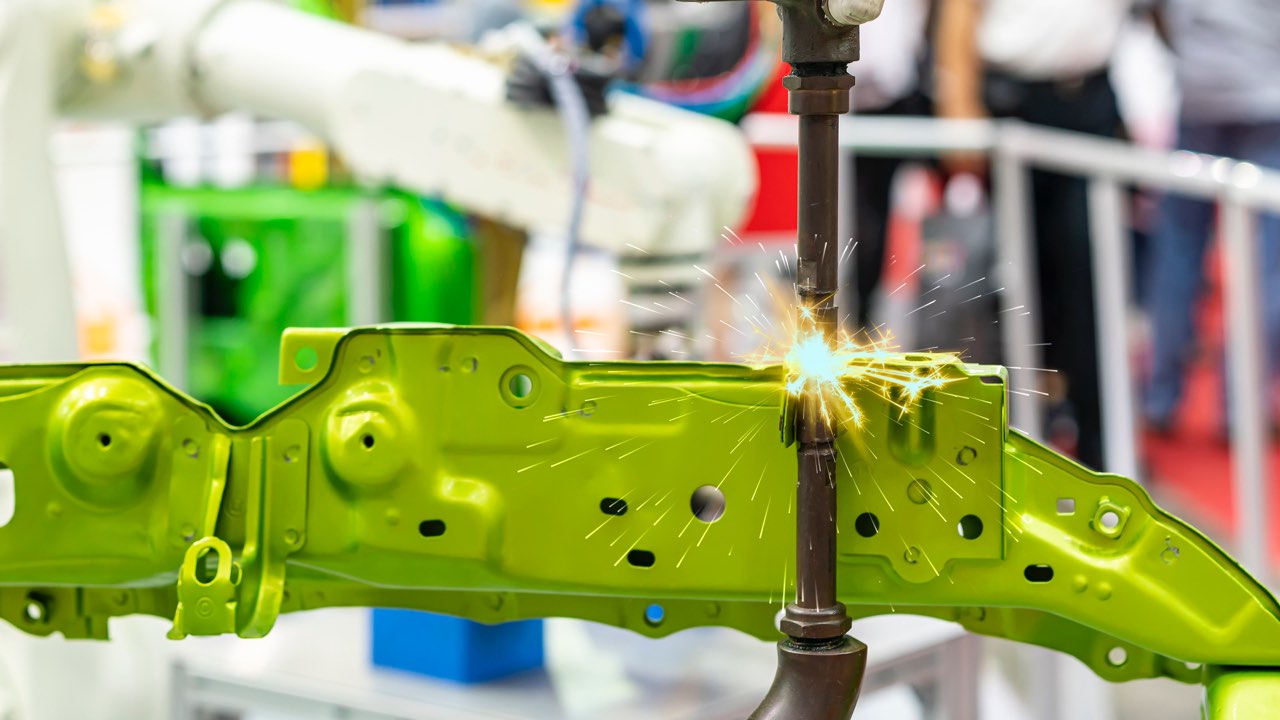
Spot welding is used to join electricity-conducting sheet metal and wire meshes. Its typically used to weld thin metals but thicknesses above 1 in. are possible only with specialized heavy-duty equipment.
It’s mostly used to manufacture automobiles. A single-vehicle typically has over 1000 spot welds over its body panels. This is done with spot welding robots in a matter of seconds. But sheet metal shops use less sophisticated methods when working on a car body.
Resistance spot welding is also used in industries like aerospace, rail, manufacturing, electronics, construction, battery, and others. It’s almost universal that spot welding robots complete this welding process in an industrial setting.
A manual spot welding machine is a useful addition to any welding shop. While not automated, it can help you create complex shapes with less effort compared to TIG or MIG welding. Besides, most jobs that require a resistance spot weld are difficult to complete without it.
Pros
- Resistance spot welding allows for high energy delivery to a concentrated spot in a short time
- Welds any conductive metal
- It’s relatively easy to perform – reduces the required operator’s skill
- Saves time and effort compared to other welding processes
- Best method to achieve proper weld strength with thin metal without burning through
- Many spot welding electrodes types are available for welding different metal alloys
- Allows for swift and efficient welds
- Electrodes handle the thermal conductivity problem by dissipating the heat away from the spot weld
- Resistance welding creates controlled, repeatable welds
- It’s a proven and time tested welding process with lots of literature available
- Welding current use is highly efficient
Cons
- You can’t spot weld metal if one side is not accessible
- Resistance spot welding may harden the nugget and the material around it, leading to cracks
- It can affect the chemical and physical properties of the workpiece metal. Corrosion resistance may be compromised with stainless steel, aluminum, and other metals
- It outputs tiny voltages (1-20V). So, any fluctuation can influence the spot weld quality
- Depending on the metal type and thickness, it may require frequent repairs
How Does Spot Welding Work?
Let’s take a look at the spot welding process, starting with the overview of the typical manual spot welder. This is a simple three-step process, but it also has many variables, which I’ll cover below.
Basics of the Spot Welder
The heart of all spot welders consists of a power supply and welding electrodes. The transformer ramps up the amperage output to around 10-12,000A, but lowers the voltage anywhere between 1-20V. The numbers will vary among the spot welder types, brands, and models.
The typical portable spot welder you are likely to use will also include a transformer, electrode holders, electrodes, lever, and a pressure cylinder.
These manual machines have less power than industrial resistance spot welding equipment.
Alignment of Workpieces and Metallic Sheets
Before making your first resistance spot weld, you have to align the workpieces. Keep in mind that warping and distortion are possible.
The first few spot welds should be placed strategically. If possible, arrange them so that one will prevent the other from distorting the metal.
Reusing the sheet metal is difficult if your weld is misaligned. You are better off starting with fresh metal pieces of the workpiece is distorted.
Applying Electrode Pressure
Next, you must choose the electrode type and apply pressure to the point where you want to make a spot weld. Most of the time, you can use the standard copper electrodes. But depending on the welded metal, you may need to use a tungsten-copper, tungsten, or molybdenum electrodes.
There are also copper-chromium, and copper-chromium-zirconium electrodes used when welding high and low carbon steels. The ISO 5182 covers all resistance welding electrodes in detail.
Once you accurately place the electrode tips on the metal, you need to apply pressure. You achieve this by using a lever when working with a portable spot welder.
Letting The Current Flow Through the Electrodes
Flicking a switch lets the current flow through the electrodes and into the metal pieces. The internal resistance melts the metal while the electrodes’ pressure solidifies the nugget.
The amount of heat the metal will produce depends on the electrical resistance of the metal, thermal conductivity, and how long the current is applied. Heat is expressed with the following equation:
Q = I2Rt
The “Q” is heat, “I” is current, “R” is electrical resistance, and the letter “t” represents the time duration of the applied current.
Spot Welding Variables
The entire spot welding process can be modified by applying different pressure, electrical input, and current durations. These modifications allow you to weld different metal types, thicknesses, and achieve different spot welding results.
Electrode Force
Electrode force squeezes the metal sheets together and you have to apply substantial force to create a quality weld. The stronger the applied force, the lower the resistance because of better contact and less heat is generated. So if a project requires a higher electrode force, you need to increase the current to offset the lower resistance in the metal.
The typical force is around 90N per mm2. However, thanks to the “mushroom” electrode tip on the spot welder, the contact surface area between the electrode and the sheet metal increases as the weld progresses. That’s because the metal’s surface will morph to fit the electrode tip shape, and the sides of the tip will then also come in contact with the metal. So, to keep the same electrode force on the piece during the welding process, you need to increase the applied force gradually.
Squeeze Time
Squeeze time is the interval between the moment you apply the electrode force and initiate the current flow. Delaying the weld current is necessary because it allows you to attain the proper electrode force. It also helps with electrode wear, arcing, and interfacial expulsion.
While increased squeeze time improves spot weld quality, it increases the cost per spot weld. This is mainly because it takes more time, and results in a reduced number of welds per unit of time.
Welding Time
Welding time is the period when active electric current flows through the metal pieces. It’s computed using line voltage cycles. Welding time is difficult to determine because it relies on the welding spot reaction.
Factors to consider when determining the welding time:
- The weld time should be as short as possible. This prevents melt-through, warping, and protects the electrodes
- Thick sheet welding should result in a nugget with a large diameter
- If your equipment can’t provide the necessary weld current and electrode force, you can compensate with a longer weld time up, to a point
- Welding sheet metal thicker than 2 mm may require dividing the weld time into multiple pulses to avoid excessive heat
Holding Time
Holding time is necessary to allow the weld nugget to solidify. This period starts after the welding time ends, and the electrodes are still applied to the metal.
The electrodes chill the weld by conducting heat away from the spot. You shouldn’t overdo the holding time because too much heat flow to the electrodes can accelerate their wear. Additionally, if the welded metal has a high carbon content, a prolonged holding time can cause brittle welds.
Spot Welding Different Materials
It’s possible to spot weld a number of metals and alloys. But to achieve quality resistance welds, a specific approach for each metal type is required.
Carbon Steel
Low carbon steel is used with all welding processes, including resistance spot welding. Thanks to its high electrical resistance and low thermal conductivity, mild steel is actually perfect for spot welding.
Steels with higher carbon content (>0.4%) are difficult to spot weld. They tend to form hard and brittle microstructures with high heat exposure. Therefore, special post-weld heat treatments are required to reduce the chances of cracking. This makes high carbon steel unfavorable for spot welding.
Galvanized steel is coated with zinc and requires a higher electrical current than uncoated steel. It’s challenging for spot welders because the copper electrodes degrade rapidly when exposed to zinc alloys. Electrodes must often be replaced or “dressed” with a cutter. Using a cutter removes contaminated surfaces and reshapes the electrode.
Stainless Steel
Stainless steel is sensitive to high, concentrated heat sources. But it can be spot welded. There are many methods and variables to set correctly depending on the stainless steel type, thickness, and finish requirements. When working with this metal, it’s always a good idea to get the manufacturer’s specification sheet and check the suggested welding requirements.
Copper-cobalt-beryllium electrodes are often used for spot welding stainless steel. They offer optimum tensile strength and electric conductivity.
Aluminum
Aluminum is the most challenging metal to spot weld. That’s because it’s an excellent heat and electricity conductor. The electricity flows through it without much resistance, and less heat is generated. In addition, the heat dissipates away from the weld rapidly and makes it difficult to get the liquid puddle to form.
The only way to spot weld aluminum is to use two to three times the weld current you’d use when welding steel. That’s why it requires a three-phase input spot welder. In addition, the spot welder needs to have a capacitor system. This allows it to “charge” and store the electricity, then it instantly discharges a significant amount of power. As a result, the generated power will be higher than what the aluminum can conduct, and the sheets will fuse together.
Resistance spot welding any aluminum alloy significantly degrades the electrodes after just a few welds. Therefore, high-volume aluminum spot welding is not a viable option.
Copper
Copper can be spot welded. But not surprisingly, the standard spot welding copper electrodes do not work. Molybdenum and tungsten electrodes are the primary choices for spot welding copper. These metals have high electrical resistance and melting temperatures.
Common Spot Welding Problems
Some of the most prominent spot welding problems are:
- Spatter reduces the aesthetics
- Electrode costs can add up fast
- Reduced weld quality due to electrode misalignment
- Cold welds are exceptionally weak
- Electrode indentation on the metal surface
- Welding too close to the edge may jeopardize the weld quality
Wrapping Up
Spot welding is a specialized process used primarily with sheet metal and serves well in specific applications. But unlike MIG or TIG welding, it can’t handle a vast array of applications.
Seam welding is a similar process based on the same principles but provides a linear, welded seam. The resistance welding field is wider and uses disc or “roller” style electrodes. So, spot welding is not the only method relying on the metal’s internal resistance for heat generation.
